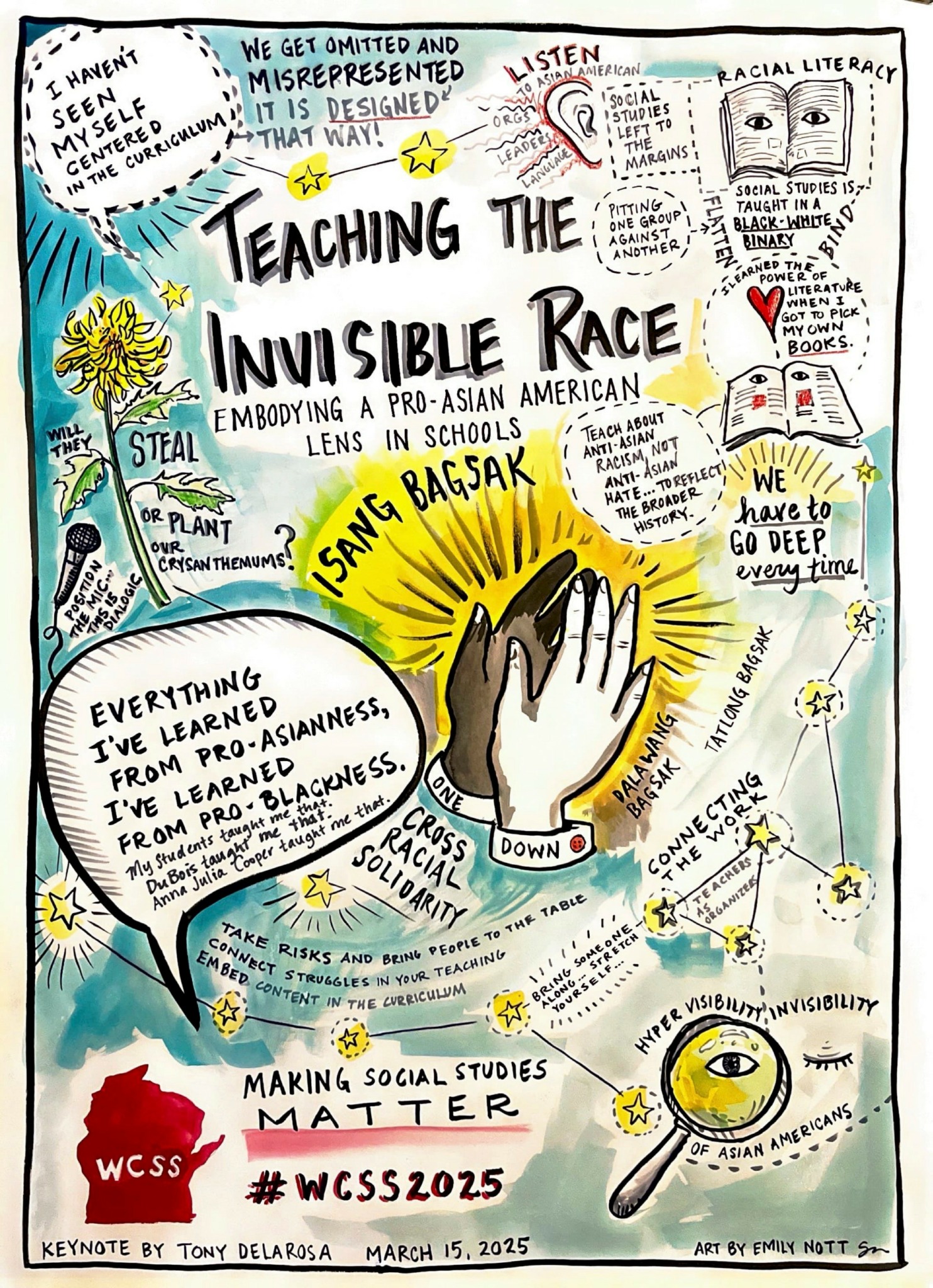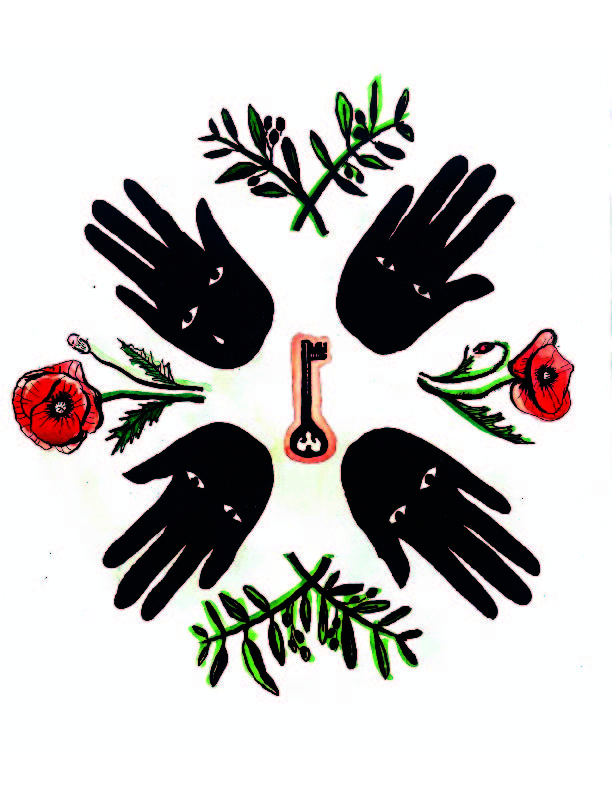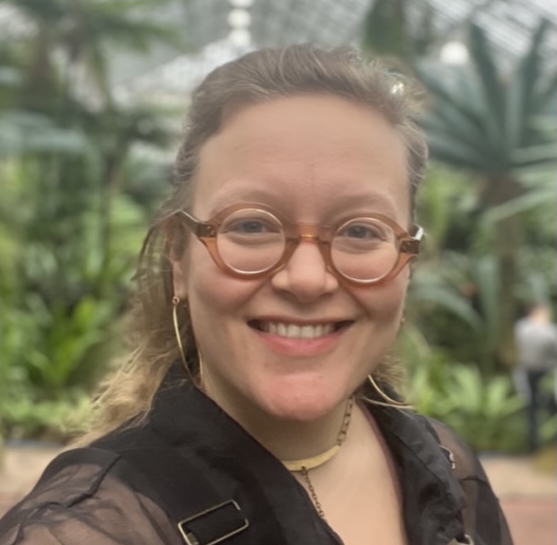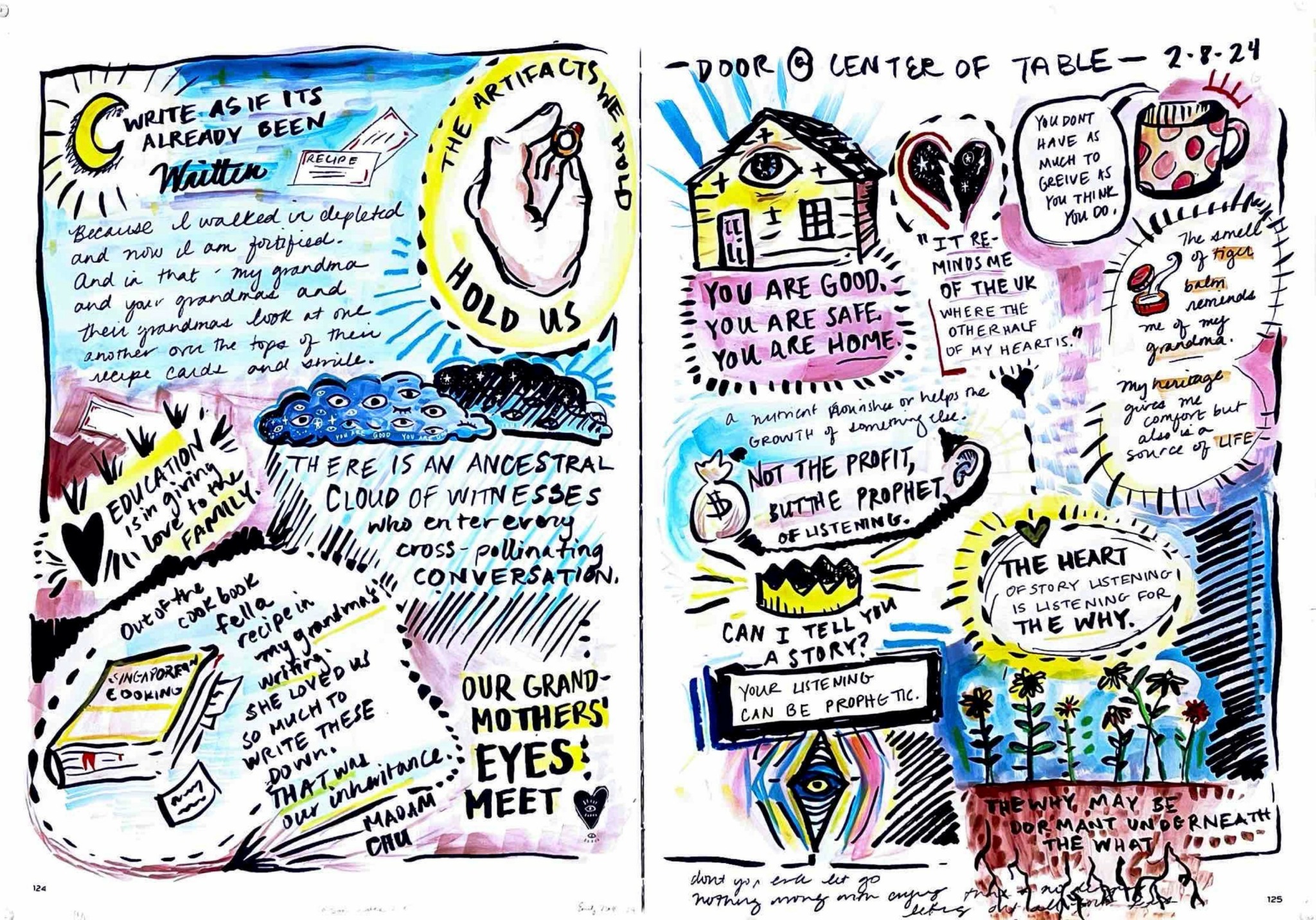We caught up with the brilliant and insightful Emily Nott a few weeks ago and have shared our conversation below.
Emily, thanks for joining us, excited to have you contributing your stories and insights. Can you talk to us about a project that’s meant a lot to you?
The most meaningful project I have worked on has been as a graphic facilitator for organizing and social justice work. This artistic practice has spanned years and remains a part of my life to this day. As a graphic facilitator, I enter education, justice, organizing and community spaces and “listen with my hands.” This means I ink notes and images from an event, convening or action and share those notes with the participants in the space. I have done this work for Teachers for Social Justice, Sustainable Community Schools, and the Dane County Food Collective. I have also been a graphic facilitator for individual speakers including Tony DeLaRosa (Anti-Racist and Pro-Asian American educator and author of “Teaching the Invisible Race”). In 2024, I served as the graphic facilitator for a series of community conversations with visiting artist Marlon Hall, who brings together culturally and cognitively diverse individuals around a table. Participants break bread, witness music, and engage in a cross pollinating conversation to build relationships across differences. The series was co-hosted by artist Faisal Abdu’Allah. Being a witness and graphic facilitator in that space was a powerful and transformative experience and I will be forever grateful to have been “at the table.” I am currently working on a feminist Disability studies coloring book with my colleague Miso Kwak that will be released this summer at A Room of One’s Own Books in Madison, WI.

Awesome – so before we get into the rest of our questions, can you briefly introduce yourself to our readers.
I am an artist, educator, and scholar who sees these three identities as linked, parts of an interconnected ecosystem of self. I am currently a doctoral student and Teaching assistant at University of Wisconsin, Madison in the department of Curriculum and instruction. Prior to my doctoral work, I have worked with youth and adults in out-of-school-time learning in Michigan and Chicago for over a decade. Previously, I served as the Director of Learning Communities at After School Matters in Chicago, where I developed teaching and learning supports for a community of about a thousand instructors and teaching artists across the city. My community engagement includes work with Teachers for Social Justice, Andaleeb Cartonera, and REACH studio art. I hold an M.Ed in Instructional Leadership from the University of Illinois at Chicago, a B.A. in Arts and Public Life from Michigan State University, and a B.F.A in Art Education from Michigan State University. I have created public art projects and installations in Michigan and Chicago and been featured in seven juried exhibitions, and have also done illustration work and graphic facilitation. What sets me apart is my belief in arts as a transformative connective tissue between people, and my ability to quickly and effectively render powerful concepts in ink. Collaborators can expect a participatory process grounded in social justice principles, yielding effective arts and education experiences.

What can society do to ensure an environment that’s helpful to artists and creatives?
I would love to see a world in which artists were sustainably and fairly compensated for what we do. Racism, abelism, and sexism also play a major part in stratifying how sustainable a career in the arts can be, and so dismantling these systems and imagining a different world must also be the work of all artists. As Tony Cade Bambara said, the work of the artist (or culture worker) is “to make revolution irresistible.” I also sincerely admire Gina Dent’s work around this, and she points out that the work of artists in abolition must be both dismantling oppressive systems and imagining liberatory possibilities. Speaking once at a conference she decried artists who depict only “shackles and chains” and described a project where she worked with incarcerated people to paint and draw pictures of the sky. This visioning work is the work of artists, and of everyone who believes that another and a better world is possible.

Have you ever had to pivot?
I had planned to be a school day art teacher until my early twenties. At that time, I moved to Chicago with a partner at the time and fell in love with teaching in non-school arts spaces. They felt so different from the school-based arts spaces I had come to know, and knew there was no turning back. That turned out to be a huge risk and massive life change, but also an incredible reward in that it led me down the path I’m on today. I learned then–and I still believe now–how vital it is to listen to your inner compass, that part in the deepest piece of you that knows the way despite what all the voices around you may say. Sometimes the risky option leads down a beautiful path.
Contact Info:
- Website: http://bit.ly/emilynott
- Instagram: emilynott2
- Linkedin: https://www.linkedin.com/in/emily-nott-38395958/



